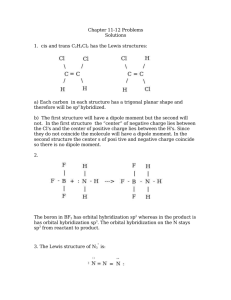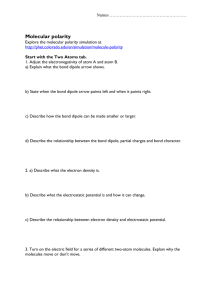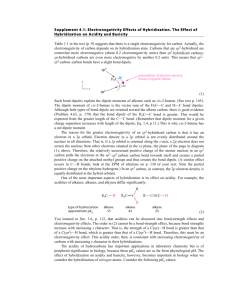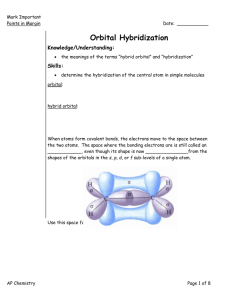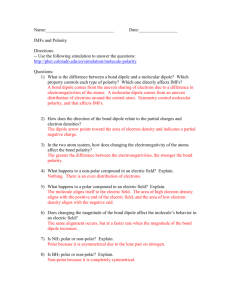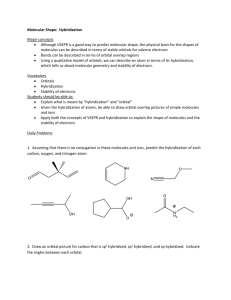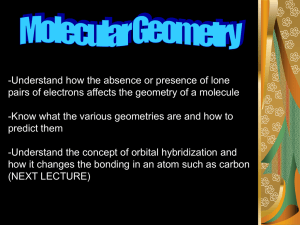9.3-9.5 Define bond dipole Predict whether these molecules are
advertisement
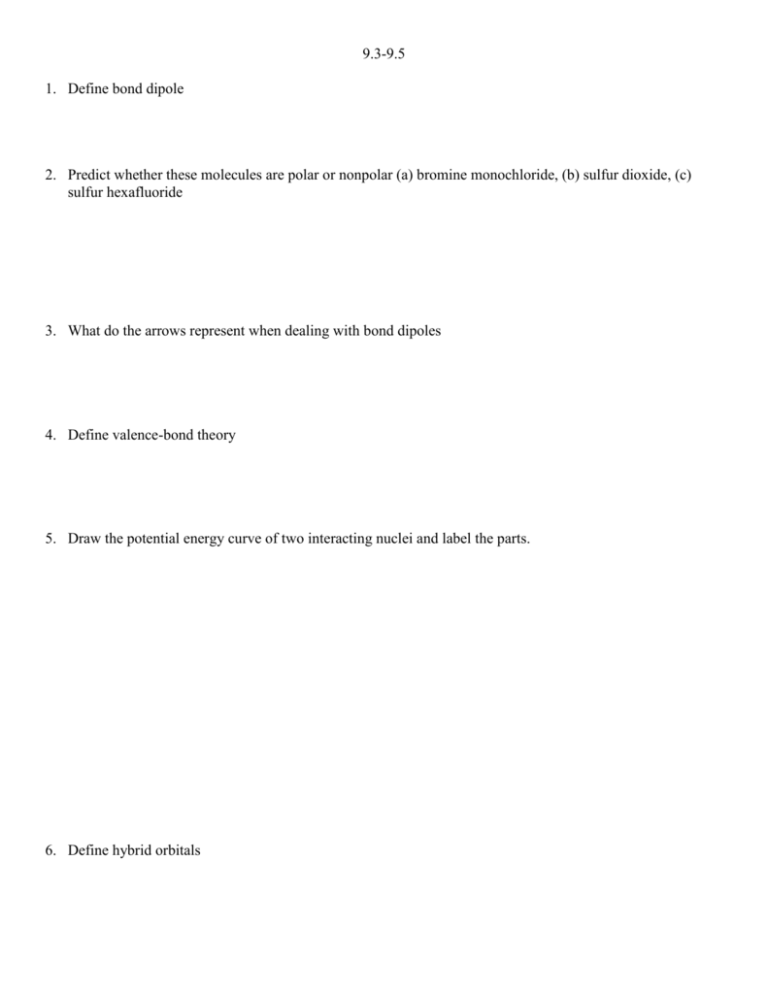
9.3-9.5 1. Define bond dipole 2. Predict whether these molecules are polar or nonpolar (a) bromine monochloride, (b) sulfur dioxide, (c) sulfur hexafluoride 3. What do the arrows represent when dealing with bond dipoles 4. Define valence-bond theory 5. Draw the potential energy curve of two interacting nuclei and label the parts. 6. Define hybrid orbitals 7. Define hybridization 8. Define and draw an sp hybridized orbital. 9. Define and draw sp2 and sp3 hybrid orbitals 10. Define hypervalent 11. Write the steps that allow us to describe the hybrid orbitals used by an atom in bonding 12. Draw the geometric arrangements characteristics of hybrid orbital sets 13. Describe the orbital hybridization around the central ato in NH2- 14. What is the distinction between a bond dipole and a molecular dipole moment? 15. (a) Does SCl2 have a dipole moment? If so, in which direction does the net dipole point? (b) Does BeCl2 have a dipole moment? If so, in which direction does the net dipole point? 16. (a) What conditions must be met if a molecule with polar bonds is nonpolar? (b) What geometries will signify nonpolar molecules for AB2, AB3, and AB4 geometries? 17. Predict whether each of the following molecules is polar or nonpolar: (a) IF, (b) CS2, (c) SO3, (d) PCl3, (e) SF6, (f) IF5. 18. Dichloroethylene C2H2Cl2 has three forms (isomers), each of which is a different substance. (a) Draw Lewis structures of the three isomers, all of which have a carbon–carbon double bond. (b) Which of these isomers has a zero dipole moment? (c) How many isomeric forms can chloroethylene, C2H3Cl, have? Would they be expected to have dipole moments? 19. (a) What is meant by the term orbital overlap? (b) Describe what a chemical bond is in terms of electron density between two atoms. 20. Consider the bonding in an MgH2 molecule. (a) Draw a Lewis structure for the molecule, and predict its molecular geometry. (b) What hybridization scheme is used in MgH2? (c) Sketch one of the two-electron bonds between an Mg hybrid orbital and an H 1s atomic orbital. 21. Indicate the hybridization of the central atom in (a) BCl3, (b) AlCl4-, (c) CS2, (d) GeH4. 22. (a) Which geometry and central atom hybridization would you expect in the series BH4-, CH4, NH4+? (b) What would you expect for the magnitude and direction of the bond dipoles in this series? (c) Write the formulas for the analogous species of the elements of period 3; would you expect them to have the same hybridization at the central atom?


